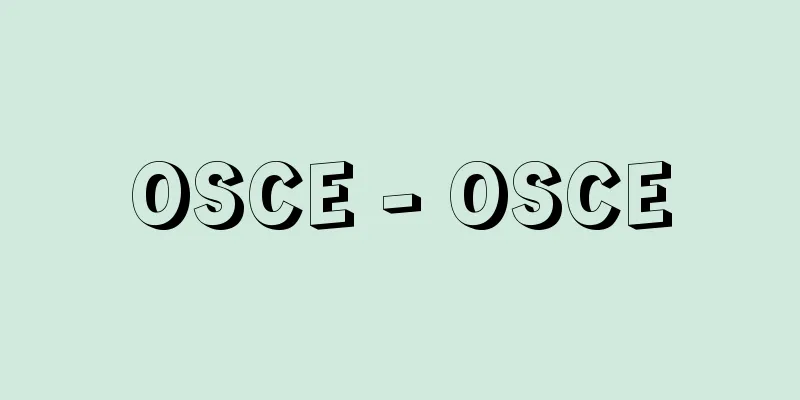The first pair of Sannin Kichisakura

|
A Kabuki play. A domestic drama in seven acts. Written by Kawatake Mokuami. It was first performed in January 1860 (Ansei 7) at the Ichimuraza in Edo by the priest Kichisa of Ichikawa Kodanji IV, the daughter Kichisa of Iwai Hanshiro VIII (then Kumesaburo), and the priest Kichisa of Ichikawa Danjūrō IX (then Kawarasaki Gonjūrō). It depicts three thieves, all named Kichisa, set in the world of "Yaoya Oshichi." In addition, the play incorporates Umebori Kokuga's humorous story "Keiseikai Futasujimichi" (The Two Paths of a Courtesan), and incorporates a love story between a wood shop owner named Bunri and a Yoshiwara prostitute named Chojiya Hitoe. However, after the Taisho era, this was dropped, and the play was often performed under the title "Sannin Kichisan Tomoe no Shiranami" (The Three Yoshisan Tomoe White Waves). On the night of Setsubun, Ojo Kichisa, a disguised thief, steals 100 ryo that Otose the Nighthawk is trying to deliver to Juzaburo, a clerk at a wood shop. He is caught by the former samurai, Obo Kichisa, and they start fighting over the money. However, Osho Kichisa, a former apprentice of Kisshoin, mediates, and the three Kichisas become sworn brothers, and the monk keeps the 100 ryo. Juzaburo, who has lost the 100 ryo, jumps into the water and is saved by the monk's father, Dozaemon Denkichi. Denkichi is horrified by the consequences of his actions, as Osho and Juzaburo are Denkichi's daughter and Denkichi's biological son, whom Denkichi abandoned long ago, and Denkichi and Osho are sworn to each other without knowing that they are siblings. The monk takes the 100 ryo and goes to Denkichi to apologize for his unfilial acts, but Denkichi is killed by the monk for the money. As the investigation into the relationship between the young lady and the priest becomes more severe, the priest kills Otose and Juzaburo, taking their karma into consideration, and sends them to take their places. However, the gates of the towns are closed, and with nowhere to run, the Sannin Kichisa stab each other to death beneath the fire watchtower in Hongo. This is one of the author's representative works of a ronin. The causal relationships among the characters surrounding the 100 ryo of gold are complex, and the story of the priest Denkichi and the animal-oriented Otose and Juzaburo, as well as the relationship between the young lady and the priest, exude the decadent mood of the late Edo period. The costumes of Ojo Kichisa, as well as the "Kisshoin" where he hides behind the heavenly figures on the transom, and the "fire watchtower" where he beats a drum, are strongly reminiscent of "Yaoya Oshichi." The most famous is the opening act "Okawabata," which can also be performed by itself. In it, the young lady's monologue, "The moon is hazy and the whitebait are floating..." is a typical example of a long, beautifully written line known as "yakubarai," which is a way to ward off evil. [Toshiaki Matsui] “Tetsuya Imao school notes, Shincho collection of Japanese classics, Sanninyoshi Sankyo first purchase” (1984, Shinchosha)” Source: Shogakukan Encyclopedia Nipponica About Encyclopedia Nipponica Information | Legend |
|
歌舞伎(かぶき)脚本。世話物。7幕。河竹黙阿弥(もくあみ)作。1860年(安政7)1月江戸・市村座で、4世市川小団次の和尚(おしょう)吉三、8世岩井半四郎(当時粂三郎(くめさぶろう))のお嬢吉三、9世市川団十郎(当時河原崎権十郎(かわらさきごんじゅうろう))のお坊吉三らにより初演。ともに吉三と名のる3人の盗賊を「八百屋(やおや)お七」の世界にはめて描いたもの。ほかに梅暮里公峨(うめぼりこくが)の洒落本(しゃれぼん)『傾城買二筋道(けいせいかいふたすじみち)』を取り入れ、木屋(きや)の旦那(だんな)文里(ぶんり)と吉原の遊女丁字屋一重(ちょうじやひとえ)の情話を絡ませているが、大正以後はこれを省き、『三人吉三巴白浪(ともえのしらなみ)』の名題(なだい)で上演されることが多くなった。 女装の盗賊お嬢吉三は節分の夜の大川端で、夜鷹(よたか)おとせが木屋の手代十三郎に届けようとする100両を奪い、侍あがりのお坊吉三に見とがめられて金を争うが、吉祥院(きっしょういん)の所化(しょけ)あがりの和尚吉三の仲裁で、3人の吉三は義兄弟になり、100両は和尚が預かる。100両を紛失した十三郎は身投げして、和尚の父土左衛門(どざえもん)伝吉に救われる。おとせは伝吉の娘、十三郎も伝吉が昔捨てた実子で、兄妹と知らず契っていたので、伝吉は因果におののく。和尚はかの100両を持って伝吉のもとへ不孝のわびに行くが、その金のため伝吉はお坊に殺される。お嬢とお坊の詮議(せんぎ)が厳しくなり、和尚は因果を含めておとせと十三郎を手にかけ、2人の身替りにたてる。しかし、町々の木戸が閉ざされ、逃げ場を失った三人吉三は、本郷の火の見櫓(やぐら)の下で刺し違えて死ぬ。作者の白浪物の代表作。100両の金をめぐる登場人物の因果関係は複雑で、和尚・伝吉と畜生道のおとせ・十三郎の話、お嬢・お坊の衆道関係などに、幕末の退廃した気分がにじむ。お嬢吉三には、扮装(ふんそう)をはじめ、欄間(らんま)の天人像に隠れる「吉祥院」や、太鼓を打つ「火の見櫓」などに「八百屋お七」の趣向が強い。もっとも有名なのは、単独でも上演される序幕「大川端」で、お嬢の「月もおぼろに白魚の……」の独白は「厄払(やくばら)い」とよばれる美文調の長台詞(ながぜりふ)の典型である。 [松井俊諭] 『今尾哲也校注『新潮日本古典集成 三人吉三廓初買』(1984・新潮社)』 出典 小学館 日本大百科全書(ニッポニカ)日本大百科全書(ニッポニカ)について 情報 | 凡例 |
<<: Three-person idiom - Sanninjogo
>>: Sanninkatawa - Three One-Wheels
Recommend
Leicester (English spelling)
A city in central England. A unitary authority. It...
Transhumance people - Ibokumin
…Of course, the distance traveled varies from reg...
forma
...For example, Descartes, who is considered the ...
Tjonger
…It existed from about 17,000 to about 12,000 yea...
Conjugate evolution
…There are many different insects involved in pol...
Lindbergh, AM
…After the war, he served as an adviser to the Ai...
《Poppo the Train》
…At the same time, together with Kosaku Yamada an...
Operating expenses - Eigyohyohyo
Cost of sales is the cost of goods sold that is ge...
Morquio, L. (English spelling) MorquioL
…Morquio syndrome is a disease reported by physic...
Magical Breasts - Manyuu
Also called "abnormal milk." In both boy...
combined harvester and thresher
…Originally called a combined harvester and thres...
Fuji Five Lakes - Fujigoko
A collective name for the five lakes at the north...
Ichinohijiri
→Kuuya Source : Heibonsha Encyclopedia About MyPed...
Joint signature - Renjo
〘 noun 〙 (later known as "rensho") 1. Th...
Roy Lichtenstein
1923‐97 American painter. Also known as Lichtenste...









